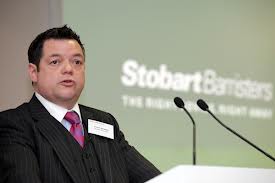The Times, May 28 scooped the story. If not subscribed to The Times Online, the reader should turn to Ben Bryant of the Telegraph to pick up the storyline, and Owen Bowcott of the Guardian who digs deeper into the Ministry of Justice denials.
The story turns on a possible saving to the Ministry of Justice of £1 billion per year, brought about by the ‘wholesale privatisation’ of the courts, thus freeing them from Treasury control. Private investment and means-tested payments would relieve the taxpayer of the long standing burden.
Sarah Vine of the Guardian also enters the fray, fingering the velum of the fourteenth century Magna Carta, and concluding, “If Grayling has his way, the only heads left above the corporate water will be the judges”.
Whilst the media focus is understandably on the prospect of corporation – such as G4S running the court service and in time perhaps even employing the judges – this blogger is more interested in the imminence of something more subtle.
Historically, the state has run a monopoly on the provision of justice including the appointment of judges whose offices followed revenue, and would be granted to those who supported the monarch. C J Sansome’s sixteenth century barrister Matthew Shardlake in the novel ‘Heartstone‘, gives a graphic description of the judges of the ‘Court of Wards and Augmentations’, the courts that dealt with wardship (equivalent to our modern day Family Courts). After the Dissolution of the Monasteries and the seizure and selling of monastic lands, the ancient ‘Office of Wards’ was abolished and replaced by the Wardship court which checked the value of lands subject to wardship, and the feodaries negotiated with applicants for the wardship (and the land) of minor heirs. Some were granted to the children’s families, but those more valuable would be awarded to the highest bidders. Bringing revenue to the King, “Wards and Augmentations would sit all summer, observed Shardlake. Justice has always been the younger brother of money, whether in the hands of the client, the lawyer or the state.
Yet this blogger senses that the issue that most concerns government is not the running of courts, but the sheer scale and cost of public justice.
Hiving off the court buildings and administration to the private sector could undoubtedly result in savings – you only have to look at prisons to see this. It could also provide a better service deal for court users. How often as clients or advocates have we wasted hours, or even days, in waiting ‘our turn’ in the overstretched court list before a judge who is expected to react to information dished up on the morning of trial? The private sector could not get it more wrong.
The real point of reform is that it is the public that ends up underwriting the cost of other people’s disputes, no matter how unreasonable. The ‘issue fee’ no way reflects the cost of running the court and the salary of judges. For genuine civic disputes, this is a necessary social cost. But for private disputes, arguments concerning spousal assets, and company and commercial disputes, the subsidy by the public is unacceptable.
Recently retired Lord Justice Sir Alan Ward summed up the problem in a noisy floor dispute, “Not all neighbours are from hell. They may simply occupy the land of bigotry. There may be no escape from hell but the boundaries of bigotry can with tact be changed by the cutting edge of reasonableness skilfully applied by a trained mediator. Give and take is often better than all or nothing”.
As other alternatives are available, why should the taxpayer fund big-money divorce litigation, the bankers’ dispute, or the noisy floor? The litigation costs of these cases are enormous, but the parties are really just paying their lawyers bills, rather than the judges’ salaries and the public cost of running a court.
The government’s agenda is to shed as much work from the state court system as possible. These days, courts clearly do not pay.
There is, of course, the minor problem of Article 6 European Convention of Human Rights, providing “in the determination of his civil rights and obligations or of any criminal charge against him, everyone is entitled to a fair and public hearing within a reasonable time by an independent and impartial tribunal established by law”. Perhaps this too is an underlying reason why some politicians are keen for repeal.
So, the blogger will forecast the next steps.
Commercial, company and most civil disputes will be directed towards arbitration, mediation and expert determination at first instance. These processes will be the ‘gate keepers’ for entry to the courts. The ‘reasonable time’ for determination of a dispute will run from the point where the alternative resolution mechanisms have been exhausted.
Likewise, family disputes involving children and money will be referred to alternative dispute resolution – where most will be expected to be solved. Only then, and on sanction of costs, will the courts intervene. The Family Court experiment with public law cases will flounder in delays exceeding 26 weeks and be replaced by tribunals.
Criminal cases will be handled by increasing use of community resolution processes, such as self-referral, the acceptance of voluntary penalties and restorative justice, offenders knowing that these will deliver the best deals. Only the hardened criminal for whom prison is inevitable will the door to the dock opened.
Of course we will still pay for the judges, but a slimmed down bench, with reduced pensions, and the small accompanying coterie of cut price lawyers will be cheap in comparison.
Perhaps Justice Secretary Chris Grayling has a point…..?






